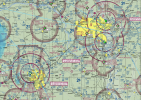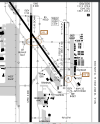VoiceOfReason
Filing Flight Plan
- Joined
- Sep 27, 2022
- Messages
- 26
- Display Name
Display name:
VoiceOfReason
I've looked here and elsewhere and cannot find what I'm after.
I'm familiar with the Pilots Handbook of Aeronautical Knowledge and did well on the written test. BUT--- I cannot find a simplistic and chronologically readable of who to call and when to get my plane in the air properly. for example:
- look up departure frequency
- dial in frequency and make the first radio call "Departure clearance, this is skyhalk 42994"
- (pause, wait for reply)
-'VFR, practice area north, 3000 ft, Skyhawk 42994"
- response from clearance 'VFR, at or below 3000, departure frequency 128.4, squawk 3722'
-
then you call the tower etc etc
Why can't I find a readable and in-order step by step on this ?
I'm now continuing my training in Class C (was at a rural airport previously with CTAF only) and I want to jus the able to read and learn the steps IN ORDER
Any leads on where to find this would help me massively !
I'm familiar with the Pilots Handbook of Aeronautical Knowledge and did well on the written test. BUT--- I cannot find a simplistic and chronologically readable of who to call and when to get my plane in the air properly. for example:
- look up departure frequency
- dial in frequency and make the first radio call "Departure clearance, this is skyhalk 42994"
- (pause, wait for reply)
-'VFR, practice area north, 3000 ft, Skyhawk 42994"
- response from clearance 'VFR, at or below 3000, departure frequency 128.4, squawk 3722'
-
then you call the tower etc etc
Why can't I find a readable and in-order step by step on this ?
I'm now continuing my training in Class C (was at a rural airport previously with CTAF only) and I want to jus the able to read and learn the steps IN ORDER
Any leads on where to find this would help me massively !



